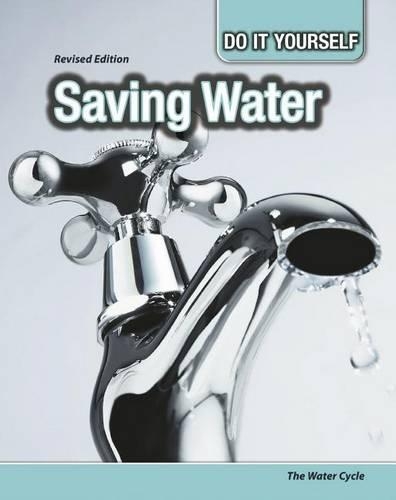
Saving Water: the Water Cycle (Do it Yourself)
(Paperback, Revised ed.)
Publishing Details
Saving Water: the Water Cycle (Do it Yourself)
By (Author) Buffy Silverman
Capstone Press
Capstone Press
15th August 2016
Revised ed.
United States
Classifications
Children
Non Fiction
551.48
Physical Properties
Paperback
48
Description
How much water should you drink in a day Where does rain go How does water shape the land Do It Yourself offers an exciting new approach to understanding and investigation. Each book helps you to conduct your own experiments and activities, and to learn more about the world around us.
Reviews
The Do It Yourself series published by Heinemann Library hits the mark of excellence that we have come to expect from this publisher. This review covers the six of the twelve titles in the series: Healthy Eating, Experiments with Light, Magnets, Growing Plants, Gravity, and Saving Water. The design and layout of the books has a pleasing balance between text, photos and diagrams, while it refrains from being too trendy with too many extra comments scattered distractingly around. The experiments are clearly laid out for ease of audience of third through sixth graders. The books include table of contents, glossary, more resources (books, places to visit, organizations, and websites), and an index. This series is a good addition to update an aging science collection, but if your collection already adequately covers these topics then this series does not offer any new aspects of significant value. Recommended--Barbara Reed, Library Media Specialist, Sherrod School Arlington Independent School District4/22/2009-- "Arlington Independent School District"
This book is a great reference for doing anything with the water cycle by oneself. The step by step directions are clearly identified with large numeration as well as pictorial directions showing the reader exactly what the directions mean. Useful charts and graphs show the reader several ways to conserve water as well as the author having written the ways to conserve water in text. Easy and informative text for students. Recommended--Lori Bierschwale, Librarian, Houston Middle School Irving ISD Learning Resources 11/16/2009-- "Irving ISD Learning Resources"
This series demonstrates that even young readers can embrace a green lifestyle. Integral to each topic are the hands-on activities that encourage children to explore the concepts being introduced. Each title defines the topic and then presents our current dilemma. Composting presents food chains and webs, focusing on the decomposers. The bulk of the book is a how-to for vermicomposting, with detailed instructions on setting up a worm bin to compost kitchen scraps. Recycling details the problems caused by the massive amounts of waste produced daily and the landfills that result. Energy describes our nonrenewable sources and presents some of the alternatives. Water makes the case for water conservation in spite of its seeming abundance. Each title gives practical examples for reducing, reusing, and recycling specific to its topic. The pages include blocks of text, captioned photographs, and call-out boxes. The activities lack sufficient introductory material and, in some cases, adequate detail in the supplies lists. A concluding discussion for each activity helps readers to make real-world connections. Spot illustrations demonstrate the numbered instructions, but some procedures, such as building a compost bin in Recycling, require more detail. Still, young conservationists looking for hands-on activities will find these timely titles attractive.-Carol S. Surges, McKinley Elementary School, Wauwatosa, WI School Library Journal-- "School Library Journal"
